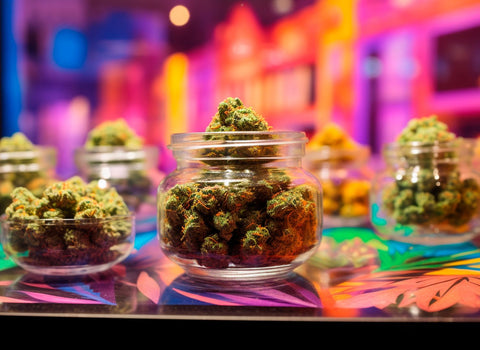
Cannabis is loaded with antioxidants such as cannabinoids, flavonoids, and phenolic compounds. Antioxidants protect our cells from harmful oxidative stress, keeping our bodies healthier and more resilient against illnesses.
Italian researchers explain that the most potent antioxidants in cannabis are cannabidiol (CBD) and cannabidiolic acid (CBDA) and that these substances could protect cells from oxidative damage and potentially prevent many types of diseases.
If you’d like to reap the benefits of antioxidants, microdosing cannabis can gently introduce these protective compounds into your system. Start with our low-dose THC gummies and see how a small amount of cannabis can boost your body’s natural defenses against cellular damage.
What do antioxidants do?
Antioxidants are compounds that protect our bodies from harmful molecules called free radicals. Free radicals are unstable and highly reactive compounds that damage cells and contribute to health issues and aging processes. Antioxidants neutralize free radicals, donating an electron to stabilize them without becoming unstable themselves. This prevents or slows down oxidative damage to cells and tissues.
Antioxidants are found naturally in foods, particularly fruits, vegetables, nuts, and whole grains. They are also produced by our bodies or taken as supplements. Each type of antioxidant has a unique way of combating oxidative stress, and they often work synergistically for enhanced protection.
Apart from neutralizing free radicals and fighting oxidative stress, here's a rundown of the key jobs antioxidants perform:
- Protect cellular components: By neutralizing free radicals, antioxidants safeguard DNA from mutations that lead to cancer, preserving the integrity of cell membranes, and preventing protein oxidation.
- Reduce inflammation: Chronic inflammation is linked to health issues, such as heart disease, diabetes, and cancer. Antioxidants modulate inflammatory responses in the body, reducing the risk of inflammation-related diseases.
- Support immune function: Antioxidants enhance the function of immune cells, helping the body defend itself against pathogens more effectively.
- Slow aging processes: Oxidative stress is a main factor in the aging process. Antioxidants slow different aspects of aging, both internally and externally. They protect the skin from UV damage and potentially delay the onset of age-related diseases.
- Promote cardiovascular health: Antioxidants help maintain heart health in several ways. They prevent the oxidation of LDL cholesterol, a process that contributes to the formation of arterial plaques. Additionally, they support the health of blood vessel linings, promoting better circulation and potentially reducing the risk of heart disease.
- Support brain function: The brain is especially susceptible to oxidative stress because it uses a lot of oxygen to function, which increases the production of potentially harmful free radicals in brain tissue. Antioxidants protect neural tissues from damage, reducing the risk of neurodegenerative diseases such as Alzheimer's and Parkinson's. They may also support cognitive function and memory as we age.
- Enhance exercise recovery: Intense physical activity can increase free radical production in the body. Antioxidants help mitigate exercise-induced oxidative stress, reducing muscle damage, inflammation, and recovery times and improving athletic performance.
- Support the detoxification process: Antioxidants neutralize harmful substances and support the liver in its detoxification functions.
Incorporate antioxidant-rich foods into your diet to harness their synergistic effects, promote health, and potentially extend your healthspan.
Major antioxidants found in cannabis
Cannabis is a rich and often overlooked source of antioxidants. Many cannabis users don’t even know about the antioxidant capacity of cannabis. Seven cannabis compounds stand out as the strongest antioxidants.
- Cannabidiol
- Tetrahydrocannabinol
- Cannabigerol
- Cannabichromene
- Cannabinol
- Alpha-pinene
- Beta-caryophyllene
Other parts of the plant, such as flavonoids and phenolic compounds, also fight oxidative damage.
One: CBD is a powerful antioxidant with neuroprotective benefits
CBD is a non-psychoactive compound with potent anti-inflammatory and antioxidant properties. Researchers have found that CBD is as effective as vitamin C at neutralizing harmful molecules in your body. In a 2023 study about the use of CBD in cosmetics, H2CBD (a CBD analog) matched vitamin C's antioxidant effects but showed better heat stability. They also found that CBD-rich hemp oil eliminates free radicals and stops fats from breaking down in harmful ways.
CBD's antioxidant properties make it a promising treatment for Alzheimer's by reducing oxidative stress in the brain. Watt and Karl show that CBD can decrease inflammation, promote new neuron growth (neurogenesis), and prevent cognitive decline in animal models.
Given its potent antioxidant profile, cannabis rich in CBD offers significant neuroprotective benefits when consumed in smaller, therapeutic doses. Read more about microdosing cannabis to support memory, cognition, and neurogenesis.
Take relaxation to the next level with our CBD Relax gummies, packed with 25 mg of hemp-derived CBD to support your mind and body naturally.
Two: THC scavenges free radicals and protects neurons
The antioxidant activity of Delta 9 tetrahydrocannabinol (Delta 9 THC) is linked to its ability to scavenge free radicals and reduce oxidative stress and inflammation, all of which protect cells from damage.
According to Stasiłowicz-Krzemień et al., there’s a strong correlation between THC content and antioxidant activity in cannabis leaf extracts. This was demonstrated through principal component analysis (PCA), which showed that THC, along with CBD, had the highest correlation with antioxidant activity among the cannabinoids studied.
Microdoses of THC exhibit potent anti-inflammatory properties. By reducing inflammation, THC indirectly supports the body's ability to fight oxidative stress, offering protection against chronic health issues such as neurodegenerative diseases, cardiovascular problems, and certain types of cancer.
Relax and support your body's natural defenses with our Bliss Delta 9 gummies. They combine only 5 mg of THC and 5 mg of CBD for a balanced, anti-inflammatory boost.
“This gummy absolutely helped me unwind after a long physical day's work. . . . Only half of the tiny gummy had me in a state of relaxation, motivation, and overall happiness. I’m absolutely ordering more!”
—Jams
Three: CBG is a potent antioxidant with anti-inflammatory effects
Cannabigerol (CBG) is a minor cannabinoid from the cannabis plant that serves as a precursor to other cannabinoids; it is the initial compound from which THC and CBD are formed in the cannabis plant. It has shown potential therapeutic properties, including anti-inflammatory and antioxidant effects.
Giacomo, et. al. propose that CBG enhances the survival rate of certain brain cells when they're exposed to hydrogen peroxide, a potent oxidizing agent. It maintains cellular functions and integrity under oxidative stress conditions. CBG also reduces the production of reactive oxygen species (ROS), unstable molecules such as free radicals, that damage cellular components including DNA, proteins, and lipids.
A 2024 study found that CBG exhibits potent antioxidant effects by reducing NOX activity and ROS levels in skin cells exposed to UVA radiation. NADPH oxidase, or NOX, is an enzyme complex that produces reactive oxygen species in cells, triggering oxidative stress.
Four: CBC supports neurological health
Cannabichromene (CBC) is another minor cannabinoid with anti-inflammatory, pain-relieving, and mood-enhancing properties. A 2023 study offered insight into its therapeutic potential as an antioxidant and anti-inflammatory agent. The study found that:
- CBC reduces inflammation by inhibiting key inflammatory markers such as NOS, IL-1β, IL-6, and TNF-α, and by suppressing the pro-inflammatory signaling pathways that regulate inflammation and immune responses.
- Its antioxidant properties reduce nitric oxide production, further protecting cells from oxidative stress.
American researchers theorize that CBC reduces inflammation by targeting specific pain pathways and lowering oxidative stress. Its anti-inflammatory and antioxidant properties make CBC a promising choice for pain management.
CBC is just one of many anti-inflammatory cannabis molecules that relieve pain. Microdosing cannabis is an effective way to manage pain, including arthritic pain, sciatica, and neuropathic pain.
Five: CBN is an antioxidant with potential synergistic effects
CBN, or cannabinol, is a mildly psychoactive cannabinoid that forms as THC degrades over time. It has therapeutic properties for promoting sleep, reducing inflammation, and relieving pain.
Khouchlaa, et. al. investigate CBN’s potent anti-inflammatory and antioxidant effects.
CBN has been found to reduce oxidative stress by scavenging reactive oxygen species (ROS) and inhibiting inflammatory mediators. This antioxidant activity potentially contributes to its neuroprotective effects and may have implications for the treatment of neurodegenerative disorders.
Experience the calming and restorative benefits of cannabinol with our CBN gummies. These delicious edibles help you unwind and protect your body from oxidative stress. If you’re having a hard time falling asleep, our Sleep gummies with a microdose of CBN (5 mg per gummy) will help you drift into restful sleep every time.
“I am so happy to have found these. I now sleep soundly for at least 6 hours! My problem was that I would wake up, everytime I moved, because of pain. Now, I fall asleep and don’t wake up for hours! These are on automatic delivery for me!”
Six: Pinene offers strong antioxidant and anti-inflammatory properties
Apart from cannabinoids, cannabis terpenes also show potent antioxidant properties. These compounds give plants their distinctive aromas and flavors, but they also contribute to their therapeutic effects.
Pinene is a natural terpene found in cannabis and other plants such as pine trees. It fights oxidative damage by reducing inflammation, neutralizing free radicals, and preventing the buildup of harmful ROS. Turkish researchers suggest that pinene activates crucial pathways for cellular antioxidant defense to mitigate oxidative damage and protect against oxidative stress-related conditions.
According to Moshrefi, et. al., these effects maintain mitochondrial function and prevent cell damage, especially in Parkinson's disease where oxidative stress is a major contributor to neuron degeneration.
Seven: caryophyllene enhances cellular antioxidant defenses
Another aromatic and therapeutic cannabis terpene, caryophyllene has a spicy, peppery aroma with hints of clove. More importantly, it can reduce inflammation, relieve pain, and offer antioxidant protection.
One study found that caryophyllene demonstrated significant antioxidant power, scoring high on the DPPH and FRAP tests, which measure its ability to neutralize harmful free radicals. It reduces oxidative stress and boosts the body’s natural defenses. Bandaru, et. al. explore how the antioxidant effects of one of its most common forms, beta-caryophyllene (β-caryophyllene), reduce oxidative stress and inflammation to improve glycemic control and support metabolic health in people with type 2 diabetes.
Other terpenes with minor but notable antioxidant effects are limonene, linalool, and myrcene.
With carefully balanced cannabinoids, terpenes, and flavonoids, our THC gummies reduce oxidative stress and support your overall health. We admit our edibles are pretty darn tasty, but if you want to elevate your taste buds and experience true bliss in a glass, our cannabis-infused beverages should be on your non-alcoholic beverage menu.
With Buzz Drops™, you can infuse any drink in a matter of seconds. Simply add a dropper or two of our liquid cannabis mixture to your mocktail, juice, or tea, mix, and enjoy. One dropper equals 2.5 mg of THC and 2.5 mg of CBD, so you can easily customize your experience to achieve the perfect balance of relaxation and relief.
The antioxidant prowess of the entourage effect
The entourage effect is the idea that all the different compounds in cannabis work better together than they do alone. In antioxidant defenses, this synergy amplifies the protective potential of cannabis, creating a more robust and comprehensive shield against oxidative stress than any single compound could provide on its own.
Here’s how the entourage effect works:
- CBD is a powerhouse antioxidant on its own. It neutralizes free radicals and reduces inflammation. Paired with THC, the two are more effective at fighting oxidative stress than either one alone.
- Throw CBN, CBG, and CBC into the mix. While not as strong an antioxidant as CBD or THC, these minor cannabinoids offer their own benefits that complement the major cannabinoids. Together, they enhance overall antioxidant capacity and provide targeted anti-inflammatory effects.
- The flavonoids in cannabis, such as cannflavin A and B, are potent antioxidants too. They work alongside the cannabinoids to boost the body's defense against oxidative damage.
- Then there are the terpenes. These aromatic compounds aren't just about smell and taste. They all have antioxidant properties that reduce inflammation and protect cells from damage.
Each one of these compounds plays its part in strengthening the body's natural antioxidant defenses. While not mentioning its antioxidant properties explicitly, a 2023 study emphasizes that full-spectrum plant extracts demonstrate superior medicinal performance compared to isolated compounds. This synergistic effect enhances different therapeutic properties, including antioxidant activity.
Microdosing allows users to harness these synergistic benefits while minimizing potential side effects. It involves consuming very small amounts of cannabis regularly and is safer and more reliable than traditional consumption methods.
Explore the benefits of microdosing weed, and make sure you understand why small, controlled amounts of cannabis are the best way to consume cannabis.
Product QUIZ
Need help deciding what product is best for you? Take our quiz, just three questions until your perfect match!
Is cannabis legal in the U.S.?
Microdosing cannabis is legal across the U.S. thanks to the 2018 Farm Bill. Delta 9 is federally legal if it comes from hemp and doesn't exceed 0.3% of the product's dry weight. This opened the door for our legal Delta 9 THC edibles.
Individual states also have their own rules. Some might be stricter, others more lenient. If you want to check your specific state's laws, our state-by-state guide to Delta 9 legality offers more details.
We sell our cannabis products in compliance with the Farm Bill, so you can enjoy the perks and reap the therapeutic benefits without worrying about federal law.
Where to buy the best cannabis edibles
Many cannabis products available today contain potentially harmful contaminants such as heavy metals, pesticides, fungi, and bacteria. These substances aren't consistently regulated or tested for safety, which is why you should get your Delta 9 gummies and cannabis-infused drinks from reputable sources such as nama™.
We prioritize quality and safety. Our products undergo comprehensive lab testing to ensure they're free from contaminants and deliver precise, reliable doses. Our gummies and beverages are subject to stringent quality control measures and independent laboratory analysis. This way, we guarantee that every product consistently meets our high standards for purity and potency.
By choosing nama, you're opting for cannabis products that prioritize your health and well-being, allowing you to experience the potential benefits with confidence. Shop at nama and experience the difference quality makes.
See where you can buy the best hemp-derived gummies in the U.S.
Antioxidants in cannabis FAQ
Is CBD rich in antioxidants?
CBD is rich in antioxidants. CBD and other cannabinoids possess significant antioxidant potential, comparable to or even exceeding that of vitamins C and E. These antioxidant properties protect cells from oxidative stress and cellular damage, which are linked to many types of health issues.
CBD's antioxidant activity works through multiple mechanisms, including neutralizing free radicals and reducing inflammation. While individual cannabinoids show promise, the entourage effect suggests that the combination of CBD and other cannabis compounds provides enhanced antioxidant benefits.
Is cannabis a superfood?
Cannabis isn't classified as a superfood, but it does contain an array of beneficial compounds that contribute to health. Cannabis is rich in cannabinoids, terpenes, flavonoids, and other phytochemicals that offer antioxidant and anti-inflammatory benefits. The leaves and seeds of cannabis are particularly nutrient-dense, containing essential fatty acids, proteins, and minerals. Hemp seeds are highly nutritious and are sometimes considered a superfood in their own right.
Cannabis is primarily cultivated and used for its medicinal or recreational effects rather than its nutritional value. While cannabis has impressive nutritional and pharmacological properties, its legal status and psychoactive components set it apart from conventional superfoods.
Is CBD beneficial for your liver?
CBD is safe for most people, and some studies suggest it even protects the liver. One study investigated the pharmacokinetics and tissue accumulation of CBD in rats, including the liver. This accumulation may influence receptor binding and enhance metabolism. CBD's antioxidant and anti-inflammatory properties could benefit liver health by reducing oxidative stress and inflammation.
High doses of CBD have been associated with elevated liver enzymes in some studies, which could indicate liver stress. This is why our full-spectrum CBD gummies are a great way to enjoy the benefits while maintaining precise control over your dosage. Start low and gradually increase as needed, minimizing potential risks to liver health.
Is hemp high in antioxidants?
Hemp is high in antioxidants. Hemp is a legal classification of low-THC cannabis and contains a wide range of antioxidant compounds, such as cannabinoids, flavonoids, and terpenes. These active compounds contribute to hemp's impressive biological activity and potential health benefits. Hemp extracts can neutralize free radicals and prevent oxidative modifications in cells.
Different extraction methods, such as ultrasound-assisted extraction or using solvents such as acetic acid, can obtain these antioxidant-rich extracts from hemp. The antioxidant activity of hemp is comparable to other known antioxidants such as ascorbic acid (vitamin C).
Is it healthier to eat or smoke cannabis?
Cannabis edibles are much healthier than smoking.
When you smoke cannabis, you're exposing your lungs to potential irritants and carcinogens produced by combustion. This can affect respiratory health and potentially increase heart rate. Consuming cannabis orally, whether through edibles, oils, or drinks, avoids these respiratory risks.
Edible cannabis products allow for more precise dosing and provide a range of cannabinoids and other beneficial compounds. The extraction methods used to create edibles can preserve many of the plant's active compounds, including its antioxidants.
Is cannabis a fruit or vegetable?
Cannabis is neither a fruit nor a vegetable; It's an herbaceous flowering plant. While parts of the cannabis plant are edible and can be used in food products, it's primarily cultivated for its medicinal compounds, fibers, and recreational use rather than as a food crop.
The cannabis plant produces flowers (often called buds) which contain the highest concentration of cannabinoids such as THC and CBD. These flowers are the part most commonly used for medicinal and recreational purposes. The leaves and seeds of the plant also have nutritional value and are sometimes used in food products.
From a botanical perspective, cannabis seeds could be considered a type of nut or grain. Hemp seeds, for example, are highly nutritious and are sometimes called a "superfood" because of their high content of proteins and essential fatty acids.
What are catechins in cannabis?
Catechins are a type of flavonoid compound found in cannabis, as well as in other plants such as tea and cocoa. In cannabis, catechins contribute to the plant's health benefits. These compounds have been studied for their biological activity, including their ability to neutralize free radicals and protect against oxidative stress.
While catechins are not as well-known or studied in cannabis as cannabinoids, they play an important role in the plant's chemical composition. The presence of catechins adds to the complexity of cannabis's phytochemical profile and may contribute to the entourage effect, where multiple compounds work synergistically to produce the plant's overall effects.
Resources
Stasiłowicz-Krzemień, A., Sip, S., Szulc, P., & Cielecka-Piontek, J. (2023). Determining Antioxidant Activity of Cannabis Leaves Extracts from Different Varieties—Unveiling Nature’s Treasure Trove. Antioxidants, 12(7). https://doi.org/10.3390/antiox12071390
Serventi, L., Flores, G. A., Cusumano, G., Barbaro, D., Tirillini, B., Venanzoni, R., Angelini, P., Acquaviva, A., Di Simone, S. C., Orlando, G., Zengin, G., Menghini, L., & Ferrante, C. (2023). Comparative Investigation of Antimicrobial and Antioxidant Effects of the Extracts from the Inflorescences and Leaves of the Cannabis sativa L. Cv. Strawberry. Antioxidants, 12(2). https://doi.org/10.3390/antiox12020219
Wu, Q., Guo, M., Zou, L., Wang, Q., & Xia, Y. (2022). 8,9-Dihydrocannabidiol, an Alternative of Cannabidiol, Its Preparation, Antibacterial and Antioxidant Ability. Molecules, 28(1). https://doi.org/10.3390/molecules28010445
Watt, G., & Karl, T. (2017). In vivo Evidence for Therapeutic Properties of Cannabidiol (CBD) for Alzheimer's Disease. Frontiers in Pharmacology, 8. https://doi.org/10.3389/fphar.2017.00020
Stasiłowicz-Krzemień, A., Sip, S., Szulc, P., & Cielecka-Piontek, J. (2023). Determining Antioxidant Activity of Cannabis Leaves Extracts from Different Varieties—Unveiling Nature’s Treasure Trove. Antioxidants, 12(7). https://doi.org/10.3390/antiox12071390
Chiavaroli, A., Recinella, L., Orlando, G., Cataldi, A., Rapino, M., Valerio, V. D., Ronci, M., Leone, S., Brunetti, L., Menghini, L., Zengin, G., Ak, G., Abdallah, H. H., & Ferrante, C. (2020). Antioxidant and Neuroprotective Effects Induced by Cannabidiol and Cannabigerol in Rat CTX-TNA2 Astrocytes and Isolated Cortexes. International Journal of Molecular Sciences, 21(10). https://doi.org/10.3390/ijms21103575
Wroński, A., Jarocka-Karpowicz, I., Surażyński, A., Gęgotek, A., Zarkovic, N., & Skrzydlewska, E. (2024). Modulation of Redox and Inflammatory Signaling in Human Skin Cells Using Phytocannabinoids Applied after UVA Irradiation: In Vitro Studies. Cells, 13(11). https://doi.org/10.3390/cells13110965
Hong, M., Kim, J., Han, J., Ryu, B., Lim, Y., Lim, J., Park, S., Kim, C., Lee, S., & Kwon, T. (2022). In Vitro and In Vivo Anti-Inflammatory Potential of Cannabichromene Isolated from Hemp. Plants, 12(23), 3966. https://doi.org/10.3390/plants12233966
Raup-Konsavage, W. M., Sepulveda, D. E., Wang, J., Dokholyan, N. V., Vrana, K. E., & Graziane, N. M. (2023). Antinociceptive Effects of Cannabichromene (CBC) in Mice: Insights from von Frey, Tail-Flick, Formalin, and Acetone Tests. Biomedicines, 12(1). https://doi.org/10.3390/biomedicines12010083
Khouchlaa, A., Khouri, S., Hajib, A., Zeouk, I., Amalich, S., Msairi, S., El Menyiy, N., Rais, C., Lahyaoui, M., Khalid, A., Abdalla, A. N., Ibrahim, S. E., El Omari, N., Goh, B. H., Kumari, Y., Tan, S. L., & Bouyahya, A. (2024). Health benefits, pharmacological properties, and metabolism of cannabinol: A comprehensive review. Industrial Crops and Products, 213, 118359. https://doi.org/10.1016/j.indcrop.2024.118359
Demir S, Mentese A, Usta ZT, Alemdar NT, Demir EA, Aliyazicioglu Y. Alpha-pinene neutralizes cisplatin-induced reproductive toxicity in male rats through activation of Nrf2 pathway. Int Urol Nephrol. 2024 Feb;56(2):527-537. doi: 10.1007/s11255-023-03817-5. Epub 2023 Oct 3. PMID: 37789204.
Moshrefi, M., Pourrahimi, A., Abbasnejad, M., Farjoo, M., & Esmaeili-Mahani, S. (2022). Alpha-pinene preserves human dopaminergic SH-SY5Y cells against 6-hydroxydopamine-induced toxicity through its antioxidant and antiapoptotic properties and gamma-aminobutyric acid type A signaling. https://www.semanticscholar.org/paper/Alpha-pinene-preserves-human-dopaminergic-SH-SY5Y-A-Moshrefi-Pourrahimi/1edbd6e9082a4b4f6ca822643d2c39bf4a4c476d
El-Mernissi, R., Menyiy, N. E., Moubachir, R., Zouhri, A., El-Mernissi, Y., Siddique, F., Nadeem, S., Ibork, H., Barnossi, A. E., Wondmie, G. F., Bourhia, M., Jardan, Y. a. B., Abboussi, O., & Hajji, L. (2024). Cannabis sativa L. essential oil: Chemical composition, anti-oxidant, anti-microbial properties, and acute toxicity: In vitro, in vivo, and in silico study. https://www.semanticscholar.org/paper/Cannabis-sativa-L.-essential-oil
Bandaru, S. D., Balraj, M., Badrachalam, R., & Mani, V. (2023). Effect of β-Caryophyllene on oxidative stress, glucose metabolism in the skeletal muscle of high fat diet and fructose-induced type-2 diabetic adult male rats. Bioinformation, 19(4), 417-422. https://doi.org/10.6026/97320630019417
Silva Sofrás FM, Desimone MF. Entourage Effect and Analytical Chemistry: Chromatography as a Tool in the Analysis of the Secondary Metabolism of Cannabis sativa L. Curr Pharm Des. 2023;29(6):394-406. doi: 10.2174/1381612829666221103093542. PMID: 36330630.
Chiavaroli, A., Recinella, L., Orlando, G., Cataldi, A., Rapino, M., Valerio, V. D., Ronci, M., Leone, S., Brunetti, L., Menghini, L., Zengin, G., Ak, G., Abdallah, H. H., & Ferrante, C. (2020). Antioxidant and Neuroprotective Effects Induced by Cannabidiol and Cannabigerol in Rat CTX-TNA2 Astrocytes and Isolated Cortexes. International Journal of Molecular Sciences, 21(10). https://doi.org/10.3390/ijms21103575
Further reading
Can THC and CBD improve focus?
What are the effects of cannabis on mental health?
The benefits of cannabinoids for migraines
How does cannabis help dementia patients?
Why are our liquid drops better than alcohol?
Is a ten-milligram edible too much for a beginner?
Best weed strains for creativity and focus
nama CBD FDA & legal disclaimer
Our products are not intended to diagnose, treat, cure, or prevent any disease. They are not a replacement for prescription medications and have not been evaluated by the Food and Drug Administration (FDA).
The information provided on this website does not and is not intended to, constitute legal advice or any statements of the status of any laws. Any information, content, and materials available on this site are for general informational purposes only and are not intended to be relied upon for any purpose.
Readers of this website should contact their attorney to obtain advice with respect to any particular legal matter including decisions on what products are, or are not, legal to sell, possess, or consume. No reader, user, or browser of this site should act or refrain from acting on the basis of information on this site without first seeking legal advice from their own counsel in the relevant jurisdiction.
Only your individual attorney can provide assurances that the information contained herein – and your interpretation of it – is applicable or accurate for your particular situation. Use of, and access to, this website or any of the links or resources contained within the site do not create an attorney-client relationship between the reader, user, or browser, and website authors, contributors, contributing law firms, or committee members and their respective employers.
More articles
About
Learn
Join us on this journey

© Copyright 2025 nama Products LLC. All Rights Reserved.
†These statements have not been evaluated by the Food and Drug Administration. These products are not intended to diagnose, treat, cure or prevent any disease. All information presented here is not meant as a substitute for or alternative to information from health care practitioners. Please consult your health care professional about potential interactions or other possible complications before using any product.
††The information provided on this website does not, and is not intended to, constitute legal advice or any statements of the status of any laws. Any information, content, and materials available on this site are for general entertainment purposes only, and are not intended to be relied upon for any purpose.
123 John Doe Street
Your Town, YT 12345
Store Hours
Sun: Closed
Mon-Fri: 9:00 - 17:00
Sat: 10:00 - 13:00
What to expect at pickup
Closed
Closing at 5pm
Closing at 5pm
Closing at 5pm
Closing at 5pm
Closing at 5pm
Closing at 1pm

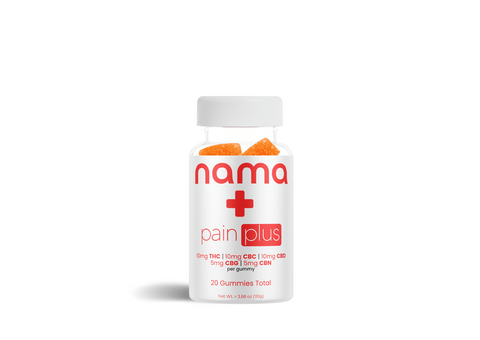
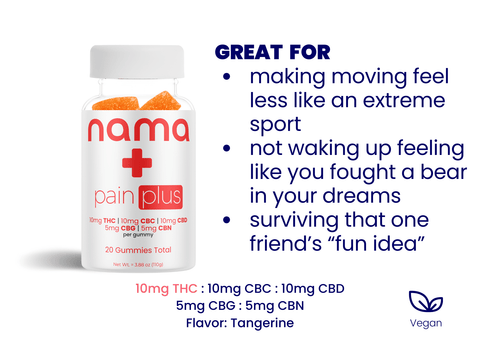
![Euphoria Black Raspberry [10ct]](http://www.namacbd.com/cdn/shop/files/nama_black_raspberry_pouch.png?v=1715285306&width=480)
![Euphoria Black Raspberry [10ct]](http://www.namacbd.com/cdn/shop/files/nama_black_raspberry_nutrition_label.png?v=1715285313&width=480)
![Euphoria Kiwi Raspberry [10ct]](http://www.namacbd.com/cdn/shop/files/nama_kiwi_raspberry_pouch.png?v=1715285056&width=480)
![Euphoria Kiwi Raspberry [10ct]](http://www.namacbd.com/cdn/shop/files/nama_euphoria_kiwiraspberry_nutrition_facts.jpg?v=1715873960&width=480)
![Euphoria Triple Berry [10ct]](http://www.namacbd.com/cdn/shop/files/nama_euphoria_triple_berry_pouch.png?v=1715286095&width=480)
![Euphoria Triple Berry [10ct]](http://www.namacbd.com/cdn/shop/files/nama_euphoria_tripleberry_nutrition_facts.jpg?v=1715873950&width=480)
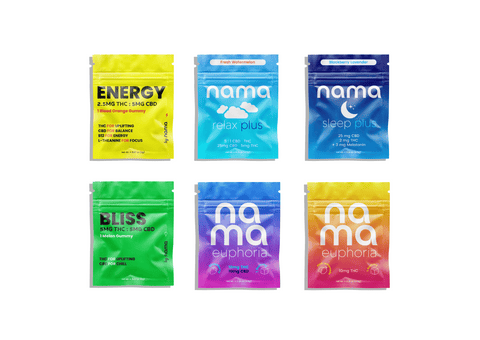
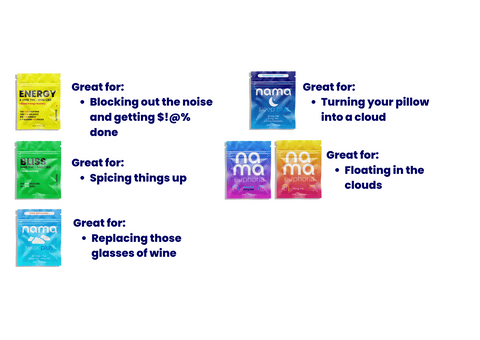
![Buzz Drops™ [THC Drink Drops]](http://www.namacbd.com/cdn/shop/files/nama_thc_buzz_drops.png?v=1711412866&width=480)
![Buzz Drops™ [THC Drink Drops]](http://www.namacbd.com/cdn/shop/files/buzz-drop-wine-comparison.png?v=1736882023&width=480)
![Buzz Packs™ [THC and CBD Powder Drink Mix]](http://www.namacbd.com/cdn/shop/files/nama_buzz_packs_thc_drink_pack_white_background.png?v=1741884660&width=480)
![Buzz Packs™ [THC and CBD Powder Drink Mix]](http://www.namacbd.com/cdn/shop/files/Buzz_Packs_Label.png?v=1741884660&width=480)
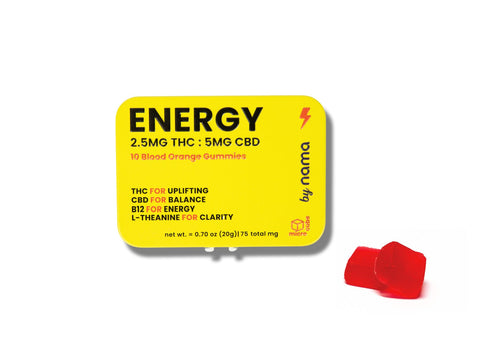
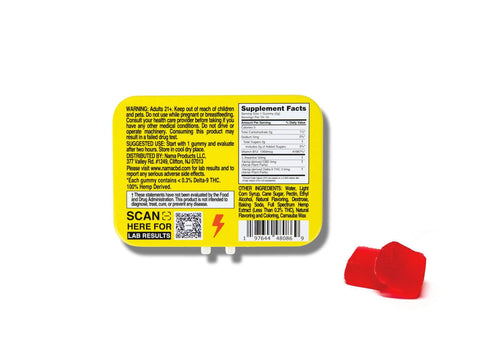
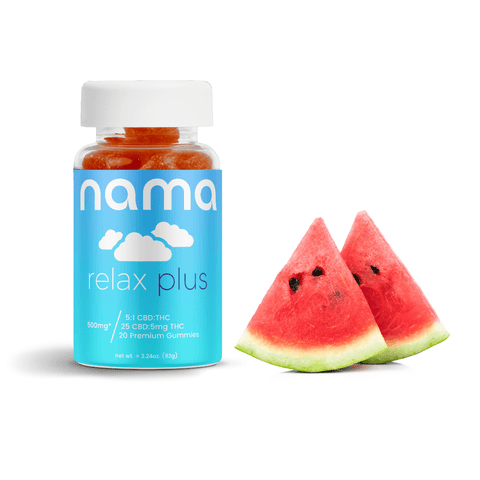
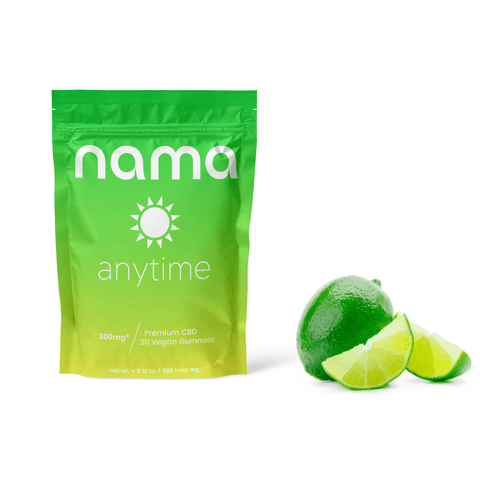
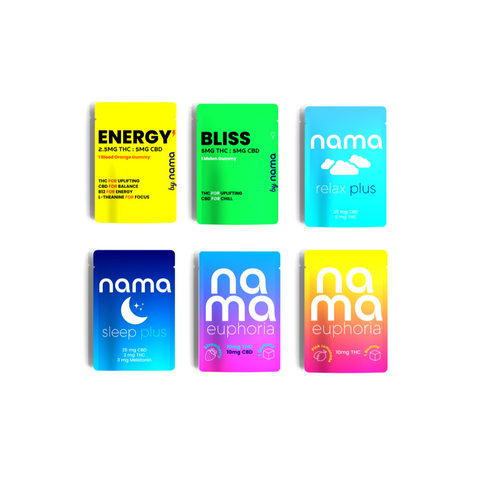
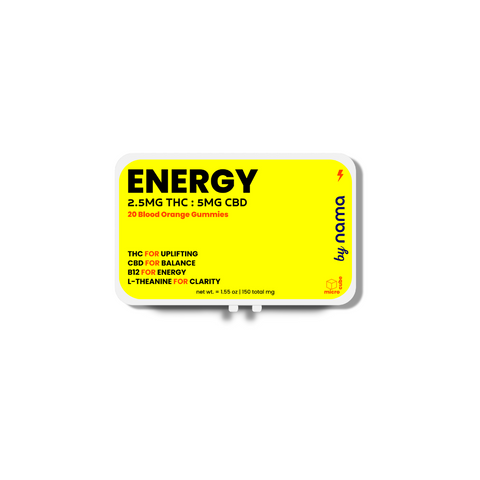
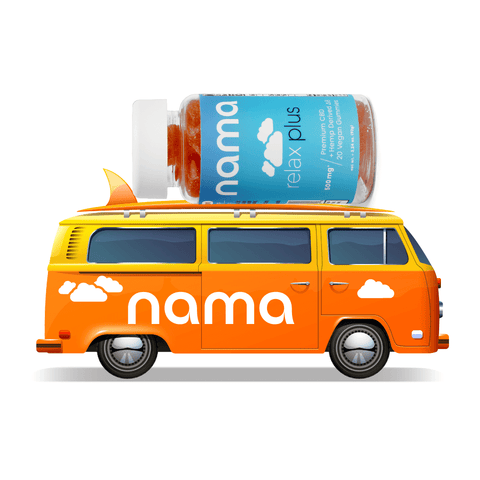
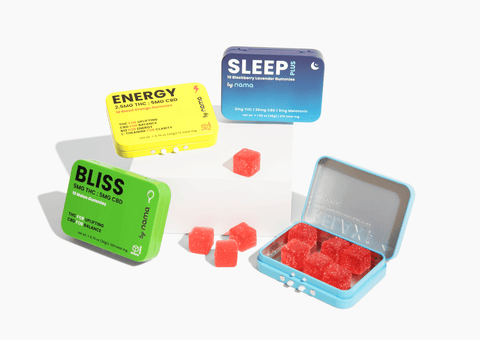
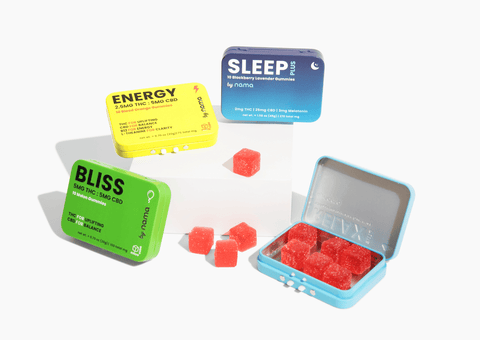
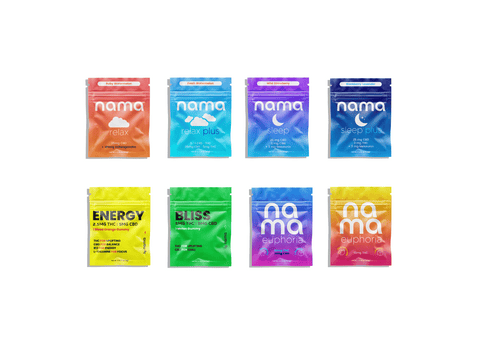
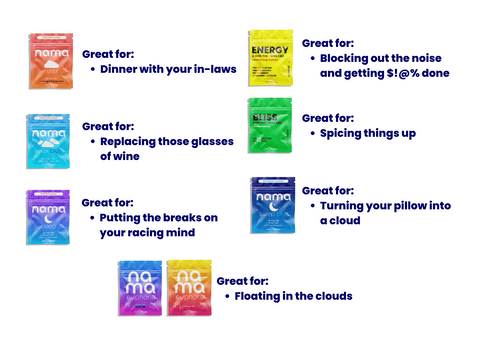
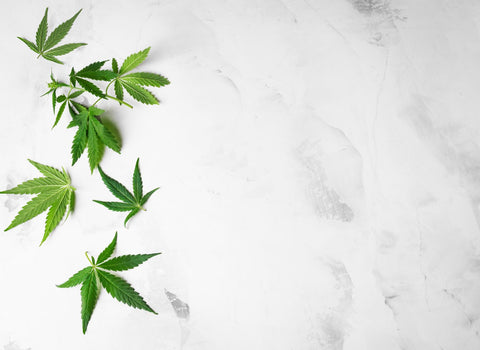
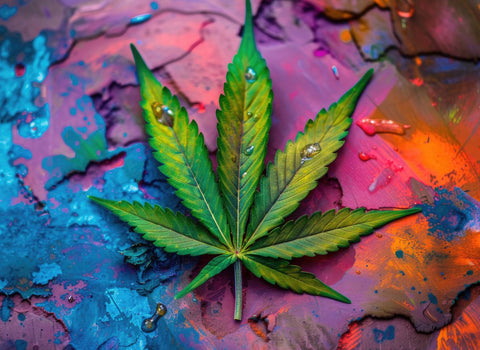


Comments (0)
There are no comments for this article. Be the first one to leave a message!